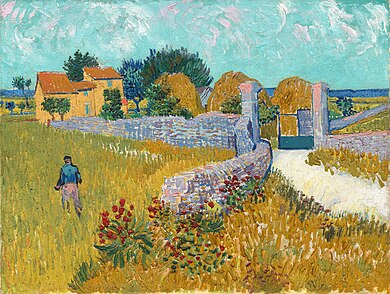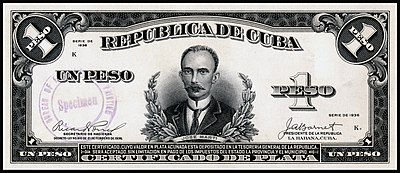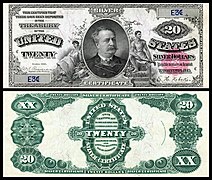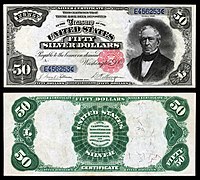Template:POTD row/testcases
| This is the template test cases page for the sandbox of Template:POTD row. to update the examples. If there are many examples of a complicated template, later ones may break due to limits in MediaWiki; see the HTML comment "NewPP limit report" in the rendered page. You can also use Special:ExpandTemplates to examine the results of template uses. You can test how this page looks in the different skins and parsers with these links: |
Size tests[edit]
Behavior of Template:POTD row largely depends on the parameters |size= and |rowsize=. Test cases below represent POTD templates of various widths.
2019-08-07[edit]
Template:POTD/2019-08-07 uses |size=390

|
Farmhouse in Provence, also known as Entrance Gate to a Farm with Haystacks, is an oil-on-canvas painting by Dutch painter Vincent van Gogh, produced in 1888, at the height of his career. It was painted while Van Gogh was living in Arles, in southern France. Partially due to having been inspired by painter Adolphe Monticelli, he sought the Provence region of France to further expand his painting skill and experience. Van Gogh used several pairs of complementary colors in the painting, the color contrast bringing an intensity to his work. The painting now hangs in the National Gallery of Art in Washington, D.C., as part of the Ailsa Mellon Bruce Collection. Painting credit: Vincent van Gogh
Recently featured:
|

|
Farmhouse in Provence, also known as Entrance Gate to a Farm with Haystacks, is an oil-on-canvas painting by Dutch painter Vincent van Gogh, produced in 1888, at the height of his career. It was painted while Van Gogh was living in Arles, in southern France. Partially due to having been inspired by painter Adolphe Monticelli, he sought the Provence region of France to further expand his painting skill and experience. Van Gogh used several pairs of complementary colors in the painting, the color contrast bringing an intensity to his work. The painting now hangs in the National Gallery of Art in Washington, D.C., as part of the Ailsa Mellon Bruce Collection. Painting credit: Vincent van Gogh
Recently featured:
|
2019-08-02[edit]
Template:POTD/2019-08-02 uses |size=300

|
The Portrait of Doña Isabel de Porcel is an oil-on-canvas painting by Spanish painter Francisco Goya, produced around 1805. The portrait depicts Isabel Lobo Velasco de Porcel, who was born at Ronda around 1780 and was the second wife of Antonio Porcel. Isabel's husband was 25 years older than she; they met when she was 20 years old. Antonio Porcel was a liberal and an associate of Manuel Godoy, Prince of Peace, who was a friend of Gaspar Melchor de Jovellanos, who in turn brought him in contact with Goya, who lived nearby; the painting is said to have been a gift from the artist in return for hospitality. The half-length portrait depicts a young woman dressed in typical Spanish attire, a white shirt and a black mantilla. In spite of her "maja" attire, the richness of the textiles and her ladylike appearance give the picture an aristocratic elegance; at this time, wealthy Spanish "people of fashion" often wore the styles of lower class urban dandies and their female equivalents, as seen in Goya's famous clothed version of La maja. The painting is now in the collection of the National Gallery in London. Painting credit: Francisco Goya
Recently featured:
|

|
The Portrait of Doña Isabel de Porcel is an oil-on-canvas painting by Spanish painter Francisco Goya, produced around 1805. The portrait depicts Isabel Lobo Velasco de Porcel, who was born at Ronda around 1780 and was the second wife of Antonio Porcel. Isabel's husband was 25 years older than she; they met when she was 20 years old. Antonio Porcel was a liberal and an associate of Manuel Godoy, Prince of Peace, who was a friend of Gaspar Melchor de Jovellanos, who in turn brought him in contact with Goya, who lived nearby; the painting is said to have been a gift from the artist in return for hospitality. The half-length portrait depicts a young woman dressed in typical Spanish attire, a white shirt and a black mantilla. In spite of her "maja" attire, the richness of the textiles and her ladylike appearance give the picture an aristocratic elegance; at this time, wealthy Spanish "people of fashion" often wore the styles of lower class urban dandies and their female equivalents, as seen in Goya's famous clothed version of La maja. The painting is now in the collection of the National Gallery in London. Painting credit: Francisco Goya
Recently featured:
|
2012-02-06[edit]
Template:POTD/2012-02-06 uses |size=250 and |rowsize=160

|
Successive close-ups of the scales of a Peacock butterfly (at top) wing. Shown from left to right, top to bottom: (second row) a closeup of the scales of the specimen at top, high magnification view of coloured scales (different species); (third row) electron micrograph of a patch of wing (~×50 magnification), the scales close up (~×200); (last row) a single scale (×1000), microstructure of a scale (×5000). Photos: MichaD (top and second row left), Shaddack (second row right), SecretDisc (micrographs)
Recently featured:
|

|
Successive close-ups of the scales of a Peacock butterfly (at top) wing. Shown from left to right, top to bottom: (second row) a closeup of the scales of the specimen at top, high magnification view of coloured scales (different species); (third row) electron micrograph of a patch of wing (~×50 magnification), the scales close up (~×200); (last row) a single scale (×1000), microstructure of a scale (×5000). Photos: MichaD (top and second row left), Shaddack (second row right), SecretDisc (micrographs)
Recently featured:
|
2019-07-04[edit]
Template:POTD/2019-07-04 uses |size=720

|
|
Back Bay is an officially recognized neighborhood of Boston, built on reclaimed land in the Charles River basin. Construction began in 1859, as the demand for luxury housing exceeded the availability in the city at the time; the area was fully built by around 1900. Back Bay was planned by architect Arthur Gilman, influenced by Haussmann's renovation of Paris. It is noted for its rows of Victorian brownstone homes – considered one of the most preserved examples of 19th-century urban design in the United States – and numerous architecturally significant buildings, as well as cultural institutions, such as the Boston Public Library. Initially conceived as a residential-only area, commercial buildings were permitted from around 1890 and Back Bay now features many office buildings, including the John Hancock Tower, Boston's tallest skyscraper. It is also considered a fashionable shopping destination and is home to several major hotels. Today, along with neighboring Beacon Hill, it is one of Boston's two most expensive residential neighborhoods. In 1973, Back Bay was listed as a historic district on the National Register of Historic Places. This picture is a panoramic view of the Back Bay skyline, taken in 2017, as seen across the Charles River from the Longfellow Bridge. Among the buildings depicted, from left to right, are the Berkeley Building, the John Hancock Tower and the Prudential Tower. Photograph credit: Tony Jin
Recently featured:
|

|
|
Back Bay is an officially recognized neighborhood of Boston, built on reclaimed land in the Charles River basin. Construction began in 1859, as the demand for luxury housing exceeded the availability in the city at the time; the area was fully built by around 1900. Back Bay was planned by architect Arthur Gilman, influenced by Haussmann's renovation of Paris. It is noted for its rows of Victorian brownstone homes – considered one of the most preserved examples of 19th-century urban design in the United States – and numerous architecturally significant buildings, as well as cultural institutions, such as the Boston Public Library. Initially conceived as a residential-only area, commercial buildings were permitted from around 1890 and Back Bay now features many office buildings, including the John Hancock Tower, Boston's tallest skyscraper. It is also considered a fashionable shopping destination and is home to several major hotels. Today, along with neighboring Beacon Hill, it is one of Boston's two most expensive residential neighborhoods. In 1973, Back Bay was listed as a historic district on the National Register of Historic Places. This picture is a panoramic view of the Back Bay skyline, taken in 2017, as seen across the Charles River from the Longfellow Bridge. Among the buildings depicted, from left to right, are the Berkeley Building, the John Hancock Tower and the Prudential Tower. Photograph credit: Tony Jin
Recently featured:
|
Dual pictures[edit]
Template:POTD/2020-05-06: Six pairs—reverse and obverse of banknotes. First and the last out of the set are tested below.
{{POTD/2020-05-06|{{Remove first word|POTD row}}|1}}
{{POTD row}}
|
Silver certificates were issued by the Republic of Cuba between 1934 and 1949. Prior and subsequent issues of Cuban banknotes were engraved and printed by non-governmental private banknote companies in the United States, but the series from 1934 to 1949 was designed, engraved, and printed by the Bureau of Engraving and Printing of the U.S. government. This is a certified proof of a one-peso silver certificate, prepared in 1936. The obverse depicts Cuban writer José Martí, with the engraved signatures of Ricardo Ponce (Secretary of the Treasury) and José Agripino Barnet (President of the Republic). The reverse, printed in blue, bears the Cuban coat of arms. This proof is part of the National Numismatic Collection at the Smithsonian Institution's National Museum of American History. Other denominations:Banknote design credit: Bureau of Engraving and Printing; engraved by William Ford; photographed by Andrew Shiva
Recently featured:
|
{{POTD row/sandbox}}
|
Silver certificates were issued by the Republic of Cuba between 1934 and 1949. Prior and subsequent issues of Cuban banknotes were engraved and printed by non-governmental private banknote companies in the United States, but the series from 1934 to 1949 was designed, engraved, and printed by the Bureau of Engraving and Printing of the U.S. government. This is a certified proof of a one-peso silver certificate, prepared in 1936. The obverse depicts Cuban writer José Martí, with the engraved signatures of Ricardo Ponce (Secretary of the Treasury) and José Agripino Barnet (President of the Republic). The reverse, printed in blue, bears the Cuban coat of arms. This proof is part of the National Numismatic Collection at the Smithsonian Institution's National Museum of American History. Other denominations:Banknote design credit: Bureau of Engraving and Printing; engraved by William Ford; photographed by Andrew Shiva
Recently featured:
|
{{POTD/2020-05-06|{{Remove first word|POTD row}}|6}}
{{POTD row}}
|
Silver certificates were issued by the Republic of Cuba between 1934 and 1949. Prior and subsequent issues of Cuban banknotes were engraved and printed by non-governmental private banknote companies in the United States, but the series from 1934 to 1949 was designed, engraved, and printed by the Bureau of Engraving and Printing of the U.S. government. This is a certified proof of a one-hundred-peso silver certificate, prepared in 1936. The obverse depicts Cuban patriot Francisco Vicente Aguilera, with the engraved signatures of Ricardo Ponce (Secretary of the Treasury) and José Agripino Barnet (President of the Republic). The reverse, printed in purple, bears the Cuban coat of arms, flanked by Havana's El Capitolio on the left and Plaza de la Catedral on the right. This proof is part of the National Numismatic Collection at the Smithsonian Institution's National Museum of American History. Other denominations:Banknote design credit: Bureau of Engraving and Printing; engraved by William Ford; photographed by Andrew Shiva
Recently featured:
|
{{POTD row/sandbox}}
|
Silver certificates were issued by the Republic of Cuba between 1934 and 1949. Prior and subsequent issues of Cuban banknotes were engraved and printed by non-governmental private banknote companies in the United States, but the series from 1934 to 1949 was designed, engraved, and printed by the Bureau of Engraving and Printing of the U.S. government. This is a certified proof of a one-hundred-peso silver certificate, prepared in 1936. The obverse depicts Cuban patriot Francisco Vicente Aguilera, with the engraved signatures of Ricardo Ponce (Secretary of the Treasury) and José Agripino Barnet (President of the Republic). The reverse, printed in purple, bears the Cuban coat of arms, flanked by Havana's El Capitolio on the left and Plaza de la Catedral on the right. This proof is part of the National Numismatic Collection at the Smithsonian Institution's National Museum of American History. Other denominations:Banknote design credit: Bureau of Engraving and Printing; engraved by William Ford; photographed by Andrew Shiva
Recently featured:
|
Tall picture[edit]
Template:POTD/2014-03-18: Tall image of a poster.
|
An advertisement for a 1927 enactment of the Indian rope trick by stage magician Howard Thurston. This form of stage magic is said to have been performed in and around India during the 19th century, though the factuality of this has been disputed. Poster: The Otis Lithograph Co.; Restoration: Adam Cuerden
Recently featured:
|
|
An advertisement for a 1927 enactment of the Indian rope trick by stage magician Howard Thurston. This form of stage magic is said to have been performed in and around India during the 19th century, though the factuality of this has been disputed. Poster: The Otis Lithograph Co.; Restoration: Adam Cuerden
Recently featured:
|
Wide picture[edit]
Template:POTD/2018-02-09: Wide panorama of La Silla Observatory in Chile.

|
|
Back Bay is an officially recognized neighborhood of Boston, built on reclaimed land in the Charles River basin. Construction began in 1859, as the demand for luxury housing exceeded the availability in the city at the time; the area was fully built by around 1900. Back Bay was planned by architect Arthur Gilman, influenced by Haussmann's renovation of Paris. It is noted for its rows of Victorian brownstone homes – considered one of the most preserved examples of 19th-century urban design in the United States – and numerous architecturally significant buildings, as well as cultural institutions, such as the Boston Public Library. Initially conceived as a residential-only area, commercial buildings were permitted from around 1890 and Back Bay now features many office buildings, including the John Hancock Tower, Boston's tallest skyscraper. It is also considered a fashionable shopping destination and is home to several major hotels. Today, along with neighboring Beacon Hill, it is one of Boston's two most expensive residential neighborhoods. In 1973, Back Bay was listed as a historic district on the National Register of Historic Places. This picture is a panoramic view of the Back Bay skyline, taken in 2017, as seen across the Charles River from the Longfellow Bridge. Among the buildings depicted, from left to right, are the Berkeley Building, the John Hancock Tower and the Prudential Tower. Photograph credit: Tony Jin
Recently featured:
|

|
|
Back Bay is an officially recognized neighborhood of Boston, built on reclaimed land in the Charles River basin. Construction began in 1859, as the demand for luxury housing exceeded the availability in the city at the time; the area was fully built by around 1900. Back Bay was planned by architect Arthur Gilman, influenced by Haussmann's renovation of Paris. It is noted for its rows of Victorian brownstone homes – considered one of the most preserved examples of 19th-century urban design in the United States – and numerous architecturally significant buildings, as well as cultural institutions, such as the Boston Public Library. Initially conceived as a residential-only area, commercial buildings were permitted from around 1890 and Back Bay now features many office buildings, including the John Hancock Tower, Boston's tallest skyscraper. It is also considered a fashionable shopping destination and is home to several major hotels. Today, along with neighboring Beacon Hill, it is one of Boston's two most expensive residential neighborhoods. In 1973, Back Bay was listed as a historic district on the National Register of Historic Places. This picture is a panoramic view of the Back Bay skyline, taken in 2017, as seen across the Charles River from the Longfellow Bridge. Among the buildings depicted, from left to right, are the Berkeley Building, the John Hancock Tower and the Prudential Tower. Photograph credit: Tony Jin
Recently featured:
|
Gallery in caption[edit]
<gallery>...</gallery> inside paramenter |caption={{POTD/2022-06-28|{{Remove first word|POTD row}}|1}}
{{POTD row}}
Silver certificates are a type of representative money issued between 1878 and 1964 in the United States as part of its circulation of paper currency. They were produced in response to silver agitation by citizens who were angered by the Coinage Act of 1873, which had effectively placed the United States on a gold standard. Since 1968 they have been redeemable only in Federal Reserve Notes and are thus obsolete, but they remain legal tender at their face value and hence are still an accepted form of currency. This is a complete set of the 1891 series of large-size silver certificates, designed by the Bureau of Engraving and Printing and comprising eight denominations from $1 to $1000. Each banknote bears the signatures of James Fount Tillman (Register of the Treasury) and Daniel N. Morgan (Treasurer of the United States), and a portrait of a different individual, identified above. Banknote design credit: Bureau of Engraving and Printing; photographed by Andrew Shiva
Recently featured:
|
{{POTD row/sandbox}}
Silver certificates are a type of representative money issued between 1878 and 1964 in the United States as part of its circulation of paper currency. They were produced in response to silver agitation by citizens who were angered by the Coinage Act of 1873, which had effectively placed the United States on a gold standard. Since 1968 they have been redeemable only in Federal Reserve Notes and are thus obsolete, but they remain legal tender at their face value and hence are still an accepted form of currency. This is a complete set of the 1891 series of large-size silver certificates, designed by the Bureau of Engraving and Printing and comprising eight denominations from $1 to $1000. Each banknote bears the signatures of James Fount Tillman (Register of the Treasury) and Daniel N. Morgan (Treasurer of the United States), and a portrait of a different individual, identified above. Banknote design credit: Bureau of Engraving and Printing; photographed by Andrew Shiva
Recently featured:
|













